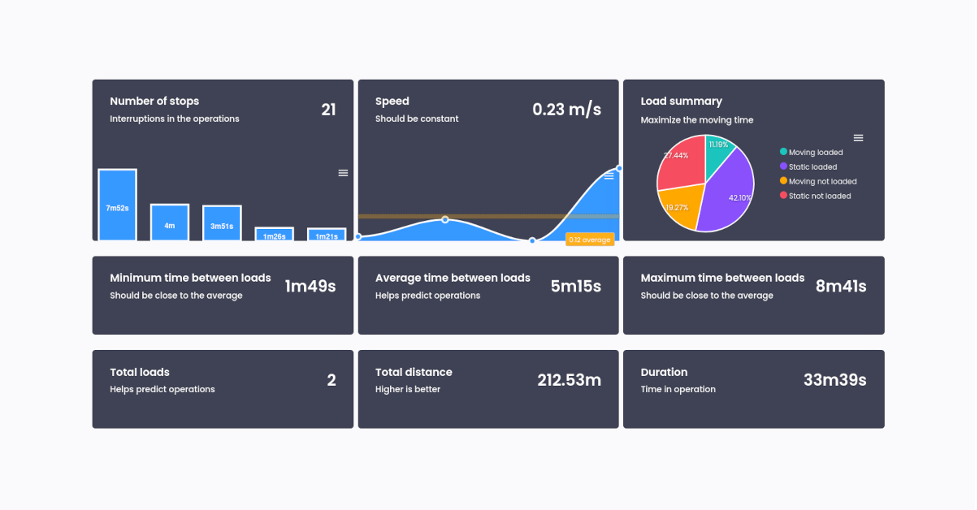AWS Robotics Blog
Category: Technical How-to
Running high-fidelity O3DE simulations in AWS RoboMaker
Developing autonomous robots is hard. Because it requires both hardware and software to be developed, integrated and tested, doing so in a physical environment is difficult and costly. Using simulations, robot developers can test their code quickly, iterating many times before finally deploying software to the hardware for testing in the real world. Having a […]
Running an SSH server on AWS RoboMaker
Overview AWS RoboMaker is a fully managed service that enables Robotics developers to build, run, scale, and automate simulations without managing any infrastructure. During the development cycle, roboticists frequently need to perform a deeper inspection of what is going on within the running container. Though CloudWatch offers important metrics and logs related to simulation jobs, […]
How Brisa Robotics uses AWS to improve robotics operations
In this post, you’ll learn how Brisa Robotics leverages Amazon Web Services (AWS) to collect, store, and process data from mixed fleets of vehicles to improve customer operations. Brisa transforms non-autonomous machines into fleets of autonomous vehicles that collect data to help customers track key performance metrics and improve operations. Their mission is to enhance […]
Deploy and Manage ROS Robots with AWS IoT Greengrass 2.0 and Docker
In this blog, we introduce a new way to deploy and manage robot software on production fleets at scale using AWS IoT Greengrass 2.0. When combined with the industry-grade tools, libraries, and capabilities of the Robot Operating System 2 (ROS2), developers can bring new cloud-enhanced robot features to market, and reduce the time and effort required to build failure-resilient infrastructure.
Containerize robot applications for testing in the cloud and deploying at the edge
Robotics developers use the open source Robot Operating System (ROS) to build distributed and complex applications for their robots. Robot developers benefit from using the cloud for building, training, and testing robotic applications at scale with Continuous integration and continuous deployment (CI/CD) workflows for physical testing and updates pushed over the air. Containers provide a […]
Build and simulate a Mini Pupper robot in the cloud without managing any infrastructure
AWS RoboMaker provides a comprehensive cloud solution for robotics development. It features fully managed simulation capabilities built on scalable infrastructure. In this post, we use a simple Mini Pupper sample application to demonstrate how to use AWS RoboMaker for robotics application development, testing, and simulation.
Introducing upload configurations for AWS RoboMaker Simulation
Introduction AWS RoboMaker now supports data upload configurations within simulation jobs. This capability allows developers to define the type of simulation data they want to upload, choose the upload behavior, and reliably upload the simulation data to their preferred Amazon S3 output location. This functionality makes it easier for developers to review or analyze application […]
Testing map generation at scale with 3D worlds from AWS WorldForge
In this blog, learn about AWS RoboMaker WorldForge, and how 3D world generation can be used to streamline testing and training of core robotic algorithms at scale.
Build an Alexa controlled robot with AWS RoboMaker
This blog references AWS RoboMaker Integrated Development Environment (IDE), a feature that has been deprecated. To follow along with this blog post, use the AWS Cloud9 IDE. See our updated blog on how to Build and simulate robotics applications in AWS Cloud9. Introduction Alexa is Amazon’s cloud-based voice service and Alexa-compatible devices allow users to […]
Easily record and store robotic application data with the S3 rosbag cloud extension for AWS RoboMaker
The S3 rosbag cloud extension enables customers to easily configure and record data from robots as rosbags, and upload them to Amazon S3, which they can later use to analyze events, troubleshoot existing applications, and provide as inputs to AWS RoboMaker log-based simulation for regression. In this blog, we will review three ROS nodes in the S3 rosbag cloud extension that create and upload rosbag files from the robot to Amazon S3, with hands-on examples of how to use the nodes.








